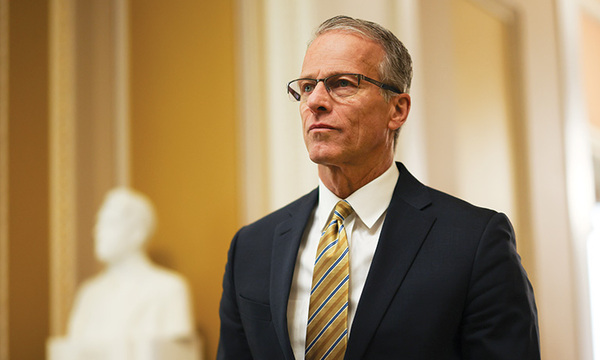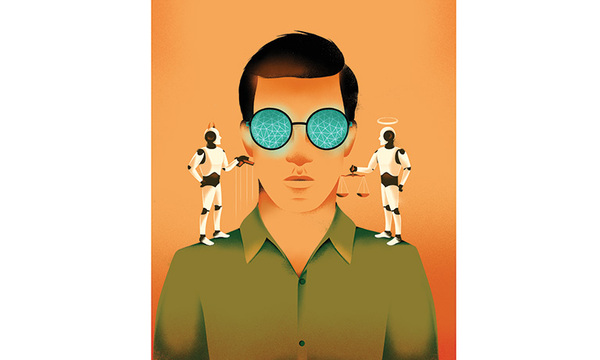When Tom Tsuchiya was asked to submit an entry for a contest to create the first permanent public sculpture at Biola, he first looked at his restrictions.
“For me, it is easy to be creative when there are limitations,” Tsuchiya said.
His limitations in this project? Location, theme, budget and audience.
With those parameters in mind, he quickly came up with an idea that was unveiled nearly a year later outside the Earl and Virginia Green Art Gallery on Sept. 18.
As the 42-year-old sculptor from Cincinnati describes it, his idea started with steel to reflect the words already adorning the art gallery, then moved quickly to using brick-like shapes to mimic the brick building it would accompany. His next step was to arrange them in a fish shape. The idea behind the sculpture was initially inspired by 1 John 3:18, which calls believers to put love into action.
“I didn’t want a sculpture that was merely just a theme or subject of Christ, but actually be able to function as something which can help carry on Christ’s message,” Tsuchiya said.
From there he turned to cans of soup.
The story of Jesus feeding 5,000 people from just five loaves and two fish was intrinsic to the Tsuchiya’s creative process. What if the sculpture not only represented Jesus feeding people, but actually helped feed real people? He was soon measuring how many soup cans could fit into one piece of the sculpture using his kitchen cabinets.
The idea was born, and soon after, chosen.
In the sculpture’s completed state, 12 metal compartments make up a giant fish-shaped form, each one etched on the inside with the name of one of Jesus’ disciples. Each compartment opens up to house soup cans that students will utilize during food drives, which Associated Students plans to host in the upcoming months. When filled with cans, the sculpture will take on the appearance of the colorful labels.
The idea of having a sculpture on campus was initiated by Marilyn Long, president of the Long Family Foundation. She prayerfully considered the idea of funding a sculpture at Biola, and says she heard a resounding yes from the Lord.
“We’re thrilled,” Long said. “I hope that the students, the faculty, the staff and whoever comes to visit will walk up to the sculpture, look at it, appreciate the fabrication of the sculpture and have a connection with it.”
“The Spirit of Christ” is dedicated to Loren Baker, the art department chair who passed away in November 2013. Present at the sculpture dedication was Baker’s sister, Cheryl Venable.
“When it’s your brother, or a sibling of any kind, you often don’t realize the impact that they have had on their world,” Venable said. “It’s just such an expression of how they all loved Loren and respected him.”
The stainless steel fish is the first of three sculptures to be installed on campus this year as part of an initiative led by President Barry H. Corey to add more beauty to campus.
“We’ve had wonderful conversations about not just more public art, but the right public art, and what a way to make a profound statement that this is the beginning of something new and revolutionary at Biola,” Corey said.
The project was revolutionary for Tsuchiya, too, and seeing his idea go from his kitchen cabinets to Biola’s campus was an experience he treasures.
“When you feel like the work lived up to your vision and you were able to make it happen, that’s always great,” Tsuchiya said. “It felt like, yes, this was what I was looking for.”
Online Extra
Watch a discussion between Tom Tsuchiya and Biola professor Dan Callis, courtesy of the Biola University Center for Christianity, Culture and the Arts.
 Biola University
Biola University


